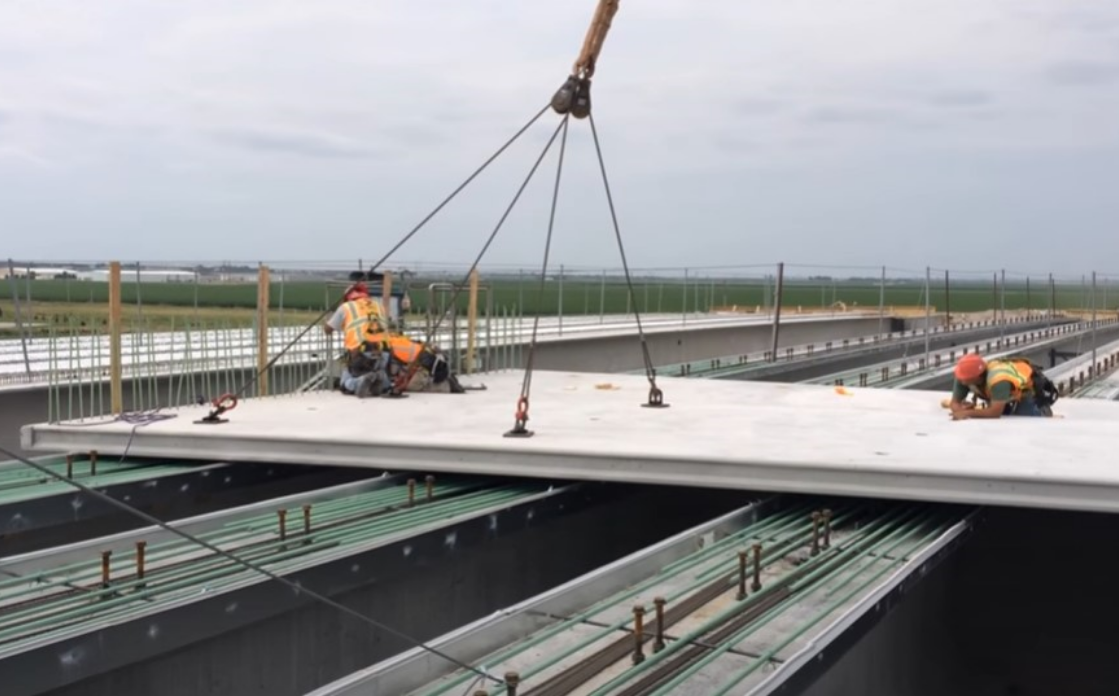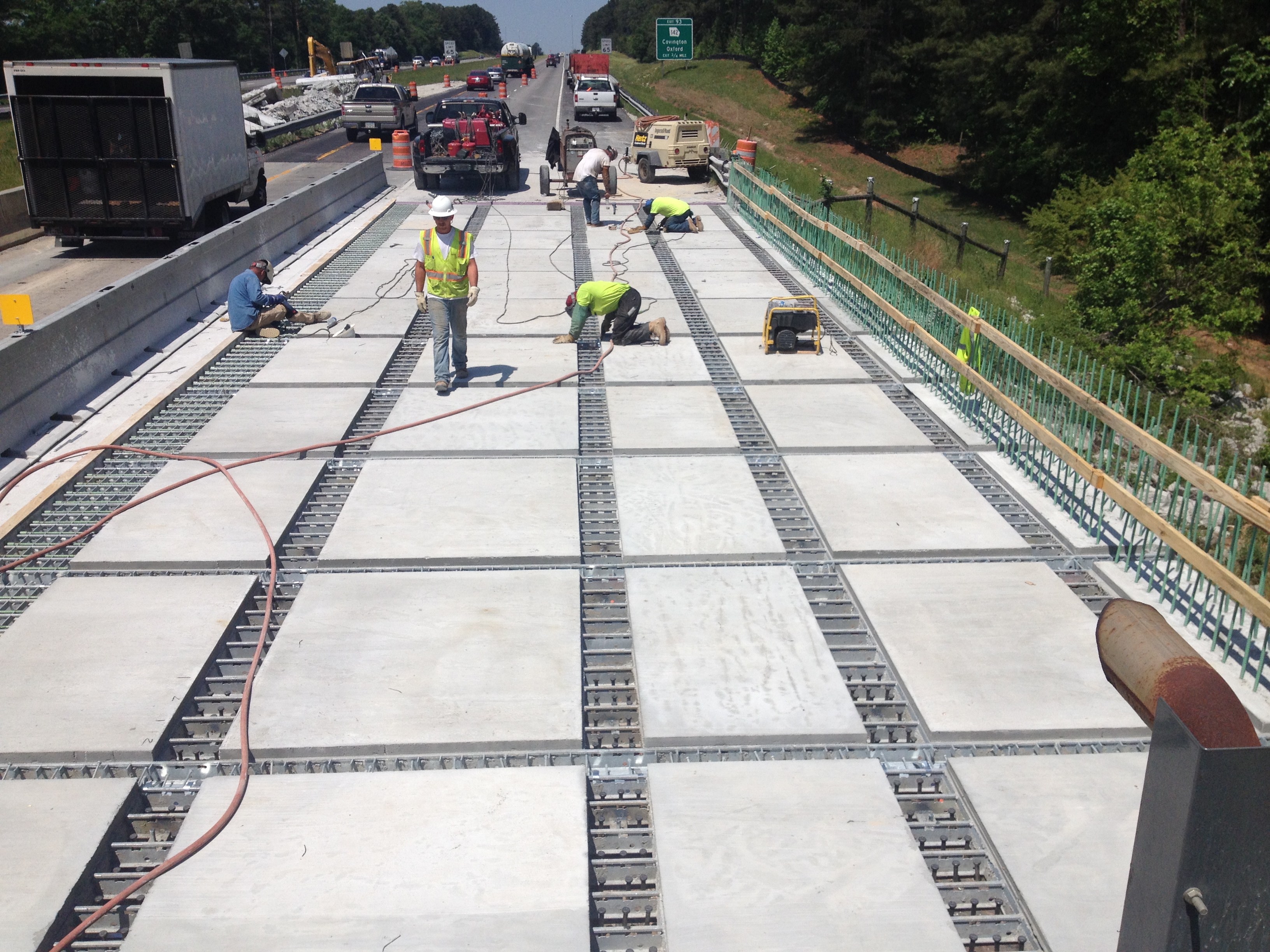What exactly is the difference? Street complete gives me two options which look very similar,
Further the definition isn't exactly clear on the tag wiki,
How do I know whether or not a plate is chained closely together? Does rebar in the form count? Do any two pieces of concrete with sand or tar in the crack count as a plate? Moreover, the linking from
Do concrete plates have to "pre-fabricated", which for me means fabricated off-site? And specifically are roads that are poured one panel at a time, like this "plates"?
asked 02 Sep '22, 01:17 Evan Carroll edited 13 Sep '22, 04:09 |
4 Answers:
I'm going to self answer this because I am sure by the description given I'm right. And 99% of people are using this tag wrong. We're given two hints on these tags pertaining
After researching this, the wiki is describing "Precast Concrete Deck Panels". This means that tagging concrete poured on site with "regular gaps in between" as Here is a road built with pre-fabricate pre-set stressed concrete plates,
Here is an example of the construction with one such plate,
Here is another method by the GOT answered 02 Sep '22, 21:49 Evan Carroll 1 See my SC answer with explanation https://github.com/streetcomplete/StreetComplete/issues/4344#issuecomment-1236169432 why I think this is wrong. One definitely does not need to be a road engineer to use this tag. Regarding: "And 99% of people are using this tag wrong", is just does not work that way in OSM. If "99% of the OSM editors" is using tag in some way, than by OSM definition it is the correct way. And if wiki disagrees with how "99% of mappers use the tag", then the wiki is wrong and needs to be corrected. As it stands, wiki for those tags is very thinly defined and could definitely use an improvement, but @scai answer is correct one. Note that while concrete slabs are very often pre-fabricated elsewhere and brought to site (which is why wiki mentiones it, I guess), that is no hard requirement - they can certainly be made on the spot. TL;DR - If there are regular holes between concrete slabs, then it is (03 Sep '22, 18:51) Matija Nalis |
Hi Matija Halis, IMHO you’re making the situation more complex, by using pics of the construction of bridges. Those beams and plates will have another surface when finished. You will never be able to build a long concrete road, without making sections. Otherwise, the concrete will react just as steel when getting too hot, have a look at railways where every now and then the rails will overstretch and bend. The concrete road will bend as well but straight up if it’s getting too hot. answered 04 Sep '22, 10:39 Hendrikklaas |
Extra picture of a concrete cycleway, in Dutch sorry, but the picture tells the whole story and its not the first time. https://www.texelsecourant.nl/nieuws/algemeen/317619/beton-fietspad-ph-zanddijk-weer-geknikt answered 04 Sep '22, 11:09 Hendrikklaas |





I think this may be how the tags are used, but this doesn't sound like it's correct. And why any of this matters seems confusing. You're not explaining why the wiki says "chained closely together" and "pre-fabricated".
I'm 90% sure the example you've given for 03 is not a
concrete:platethat looks like it was poured on site like any road, and later paved with asphalt. That is exactly the question though. Is a road like that with "regular gaps" aconrete:plate. I think now I've been doing all of them wrong.see the related Streetcomplete issue and comments on it: https://github.com/streetcomplete/StreetComplete/issues/4344